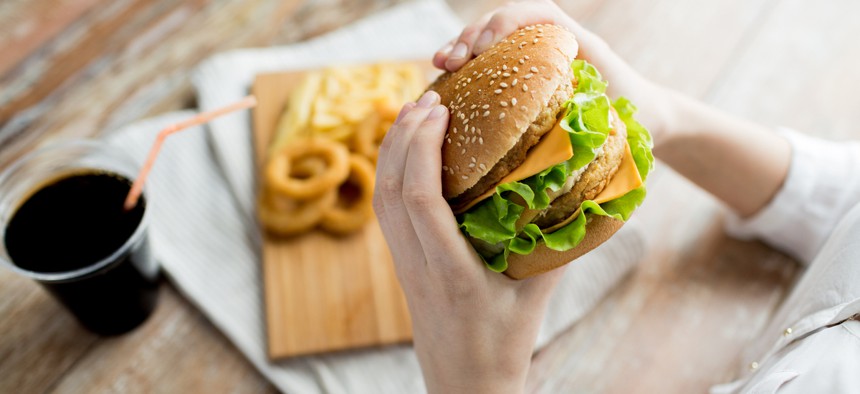This State May Allow Restaurants to Accept Food Stamp Benefits

The USDA has long allowed states to decide whether to allow SNAP benefits to be used at restaurants, but participation in the program is low. Shutterstock

Connecting state and local government leaders
A bill awaiting the governor's signature in Illinois would give some SNAP recipients the option to use their benefits at restaurants and to purchase hot prepared food at grocery stores.
Elderly, disabled and homeless food stamp recipients in Illinois would be able to use their benefits at restaurants under legislation forwarded to Gov. J.B. Pritzker last month.
The bill, approved by wide margins in both chambers of the Illinois General Assembly, directs the state to establish a Restaurant Meals Program as part of the Supplemental Nutrition Assistance Program, or SNAP. Restaurants can choose whether to participate and must offer discounted meals to be eligible.
Currently, SNAP recipients can use their benefits only to buy groceries (ranging from poultry, dairy and vegetables to snack foods and non-alcoholic beverages). Benefits can’t be used to pay for hot food or prepared meals “fit for immediate consumption,” according to the federal Department of Agriculture, which funds and runs SNAP.
But the USDA has long allowed states to decide for themselves whether SNAP benefits can be redeemed at restaurants within their borders via the Restaurant Meals Program. Established in 1977, the program is a voluntary component of SNAP that gives states the ability to grant restaurant benefits to food stamp recipients who are elderly (over the age of 60), disabled or homeless. States don’t have to take legislative action to opt into the program, though doing so can shield the move from dismantling by future administrations.
But participation is rare. Arizona administers the program at the state level, while a handful of counties in California also participate. Rhode Island is participating in a pilot program, and Maryland passed a similar bill in May that was signed by Republican Gov. Larry Hogan.
Proponents of the measure say it grants additional dining options to people who may struggle to prepare their own meals.
“Somebody’s who’s homeless, for example, they don’t have a place to prepare that food, or somebody who’s disabled, they’re not able to come home and cook a meal themselves,” state Rep. Tom Demmer, a Republican, told WICS-TV. But restaurant meals are more expensive than groceries, Demmer noted, meaning a person could spend a larger portion of their SNAP benefits to receive a smaller amount of food.
“The prices of foods at restaurants are higher than what it might be at the grocery store and so, there's a little bit of a trade-off there,” he said. “So we want to make sure people aren't running out of benefits at the end of the month.”
In Arizona, most restaurants participating in the program are fast-food establishments, including Subway and Jack in the Box. But the state’s program also allows grocery stores to sell sandwiches and other prepared foods.
Illinois State Rep. Sonya Harper, the legislation’s main sponsor, told the Chicago Tribune she doesn’t expect many fast-food restaurants to participate in the program there. The goal, she told the paper, was to allow people to use benefits to buy hot food from grocery stores where they already shop regularly.
“It makes your life easier,” she said.
It’s unclear if Pritzker, a Democrat, plans to sign the legislation. His office did not return a request for comment. If signed, the law will take effect Jan. 1, 2020.
Kate Elizabeth Queram is a Staff Correspondent for Route Fifty and is based in Washington, D.C.

NEXT STORY: Virginia Governor to Call a Special Session to Address Gun Violence




